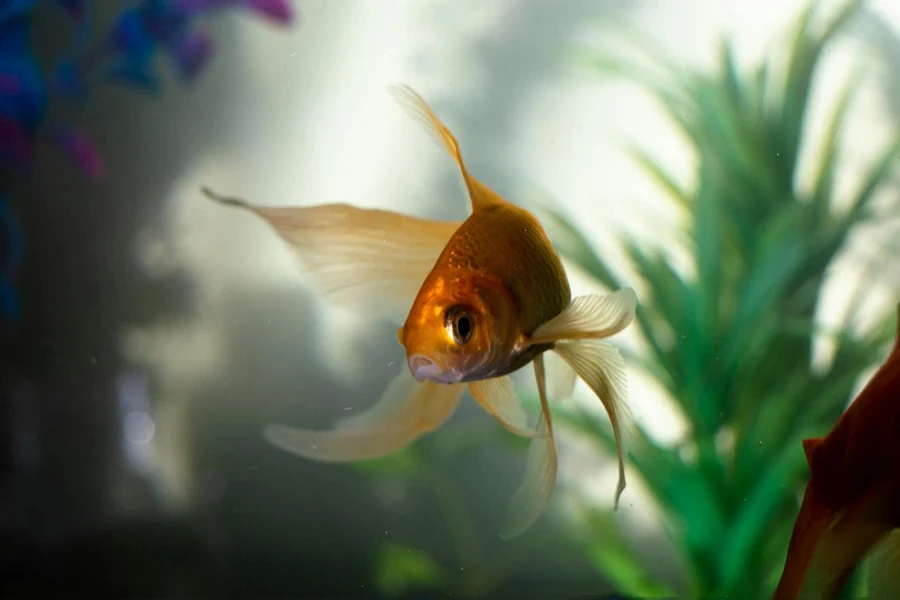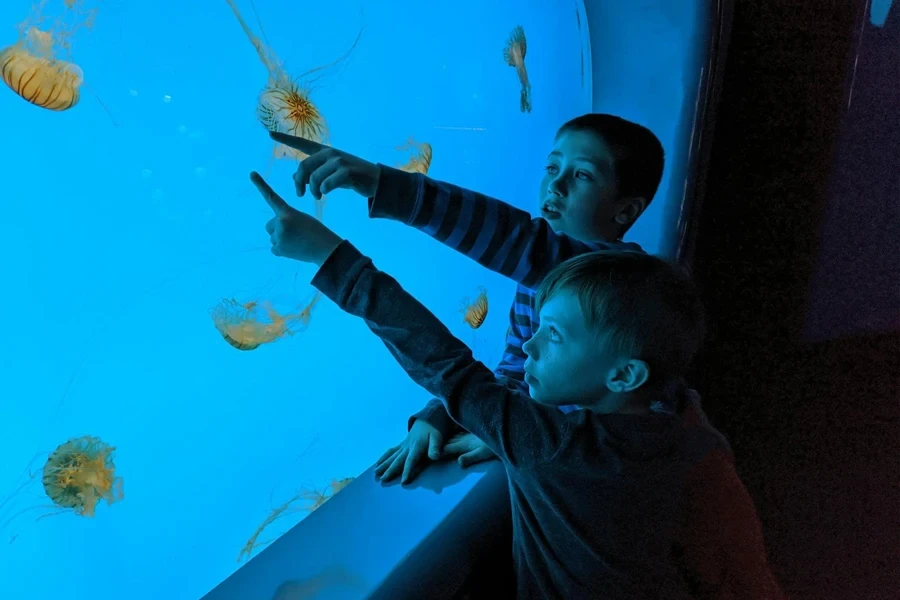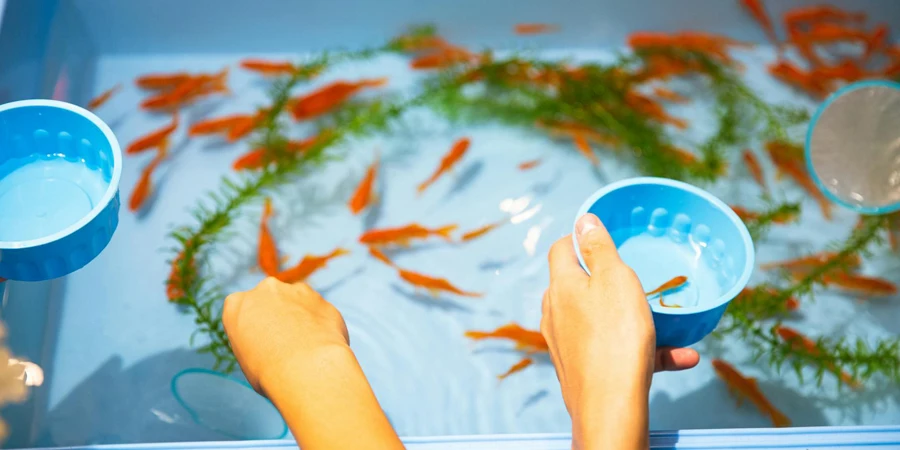Table of Contents
● Introduction
● Market overview
● Things to consider when selecting aquarium and accessories
● Different types of aquarium accessories and their features
● Conclusion
Introduction
Aquariums are more than just decorative features; they are dynamic ecosystems that bring a piece of the natural world into our homes and workplaces. The art and science of aquarium maintenance involve a thorough understanding of the intricate balance required to sustain such ecosystems. This includes selecting the right combination of aquarium accessories, which are vital for the health and growth of the aquatic life they support. From sophisticated filtration systems that ensure clean and healthy water to specialized lighting that simulates natural light cycles for plant and coral growth, each component plays a crucial role. Moreover, heaters and coolers maintain the water at an ideal temperature, catering to the specific needs of different aquatic species. Decorative elements not only enhance the visual appeal but also provide essential hiding spots for fish, contributing to their well-being by mimicking their natural habitats. Therefore, setting up and maintaining an aquarium requires careful consideration of both functional and aesthetic factors, ensuring a thriving aquatic environment that can offer tranquility and beauty to any observer.

Market overview
The global aquarium accessories market is currently valued at $4.7 billion as of 2023, with projections indicating growth to $7.0 billion by 2032, achieving a compound annual growth rate (CAGR) of 4.4%, according to the IMARC Group. This growth underscores the increasing interest in aquariums as decorative and calming additions to both residential and commercial spaces, driven by advancements in accessory materials and functionality.
In terms of market share, the sector is characterized by the presence of several key players who are continually pushing the boundaries with innovations. These companies are not only improving the quality and diversity of filters, pumps, and decorative items but are also integrating cutting-edge technologies like ultraviolet (UV) sterilization and Internet of Things (IoT) capabilities. Recent market developments highlight the trend towards eco-friendliness and customization, with manufacturers focusing on eco-friendly materials that are less harmful to the environment and customizable options that cater to specific aesthetic or functional needs of end-users. The shift towards such innovations reflects growing consumer awareness and the demand for sustainable and tailored solutions in the aquarium industry.

Things to consider when selecting aquarium and accessories
Size and growth potential of fish
The size and growth potential of fish are critical considerations when setting up an aquarium. It’s important to understand how large a fish can grow over time, which influences the size of the aquarium needed and the type of filtration system required to maintain healthy water conditions. This knowledge helps prevent overcrowding and ensures that each fish has enough space to thrive in its aquatic environment.
Dietary needs
Understanding the dietary needs of fish is essential for maintaining their health and vitality in an aquarium setting. Different species require specific types of food, such as flakes, pellets, live, or frozen options, based on their natural eating habits. Providing the correct diet ensures that fish receive the necessary nutrients for growth, color enhancement, and immune system support, and it also helps to keep the water quality high by reducing the amount of uneaten food that can decompose and pollute the tank.
Temperament and territorial behavior
The temperament and territorial behavior of fish are crucial factors to consider when populating an aquarium. Fish species vary widely in their social interactions; some are peaceful and can coexist with a variety of other species, while others may be aggressive or territorial, particularly towards their own kind or fish that invade their perceived space. Understanding these behaviors is essential for planning tank communities that prevent conflict, stress, and potential harm, ensuring a harmonious and healthy aquarium environment.
Water parameters and temperature
Maintaining specific water parameters and temperature is essential for the health and well-being of aquarium inhabitants. Different species of fish and aquatic plants have precise requirements for pH, water hardness, and temperature. Adhering to these parameters helps mimic their natural habitats, which is crucial for their survival and well-being. For instance, tropical fish typically require warmer water, whereas species from temperate regions might need cooler conditions. Regular monitoring and adjusting of these conditions using appropriate heaters, chillers, and testing kits are vital to keep the aquarium stable and healthy.
Population density
Managing population density in an aquarium is crucial for maintaining a healthy environment. Overcrowding can lead to increased waste, which deteriorates water quality and increases stress among the fish, making them more susceptible to diseases. It’s important to consider the adult size and social behavior of each species when determining how many fish can comfortably coexist in the given space. Ensuring there is ample room for swimming and territories reduces stress and aggression, contributing to the overall health and longevity of the aquarium’s inhabitants.

Different types of aquarium accessories and their features
Filtration systems
The heart of any aquarium, filtration systems are critical for maintaining water clarity and quality. These systems come in various types such as mechanical, chemical, and biological filters. Mechanical filters remove physical particles from the water, chemical filters cleanse water of soluble waste using activated carbon or similar materials, and biological filters use beneficial bacteria to convert harmful ammonia and nitrites into less harmful nitrates. According to LiveAquaria, selecting a filter with the correct gallon per hour (gph) rating is vital to ensure the entire water volume circulates multiple times per hour, which is crucial for maintaining a healthy environment.
Lighting solutions
Lighting solutions in aquariums are crucial not only for enhancing the visual appeal of the setup but also for the health of the aquatic organisms that reside within. Different types of lighting serve various purposes: standard fluorescent bulbs are commonly used for general illumination and are suitable for most freshwater and saltwater aquariums. LED lighting, increasingly popular due to its energy efficiency and longevity, offers a broader spectrum of light that can be adjusted to mimic natural light cycles, essential for the growth of plants and corals in the tank. Advanced lighting systems can also feature timers and dimmers to simulate sunrise and sunset, providing a more natural environment that can help regulate the biological cycles of fish and plant life.
Decorative elements
Decorative elements in an aquarium do more than just enhance its aesthetic appeal; they also play a significant role in the health and well-being of its inhabitants. These elements include a variety of substrates, artificial plants, rocks, and themed decorations such as shipwrecks or castles, which help recreate natural environments and provide essential hiding spots for fish. This is particularly important for shy or territorial species that need spaces to retreat to for stress reduction. Furthermore, decorations can help break the line of sight in the tank, reducing aggression among inhabitants by dividing territories. Additionally, certain types of decorations can influence water chemistry, such as driftwood, which can soften and acidify the water, benefiting species that thrive in such conditions.
Heating and cooling equipment
Heating and cooling equipment are essential components of an aquarium’s setup to maintain stable water temperatures suited to the specific needs of the aquatic life housed within. Heaters are necessary for tropical tanks where warmer temperatures mimic the natural conditions that tropical species thrive in. Conversely, coolers might be needed for setups that house species from cooler climates, or in situations where external heat sources cause the tank temperature to rise above safe levels. These devices often come with thermostats to automatically adjust the water temperature, ensuring it remains constant, which is crucial for the health and stress levels of the tank inhabitants. Proper selection and maintenance of heating and cooling equipment help replicate the natural environmental conditions, promoting a thriving aquatic ecosystem.
Water conditioners and test kits
Water conditioners and test kits are essential for maintaining aquarium health and balance. Conditioners play a crucial role by neutralizing harmful chemicals like chlorine and chloramines in tap water, making it safe for aquatic life and helping to protect fish gills. Simultaneously, test kits are vital for regularly monitoring water quality parameters such as pH, ammonia, nitrite, and nitrate levels. These kits allow aquarium owners to detect any harmful changes in water conditions early, enabling proactive management to ensure the environment remains optimal for the health and well-being of the aquarium’s inhabitants.

Conclusion
Choosing the right aquarium and accessories is crucial for maintaining a healthy and visually appealing aquatic environment, tailored to the specific needs of its inhabitants. From filtration systems to lighting and decorative elements, each accessory plays a vital role in supporting the ecosystem within the aquarium. With the market for aquarium accessories projected to grow, there is an increasing availability of innovative products that enhance functionality and aesthetics. Educated decisions, informed by the latest market offerings and the specific requirements of aquatic life, are essential for creating a balanced and thriving environment.




